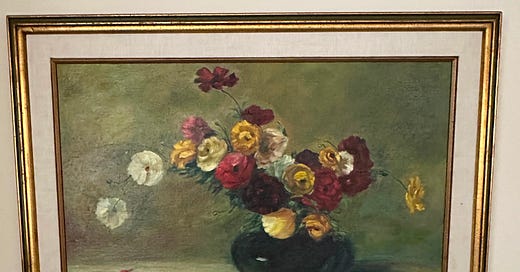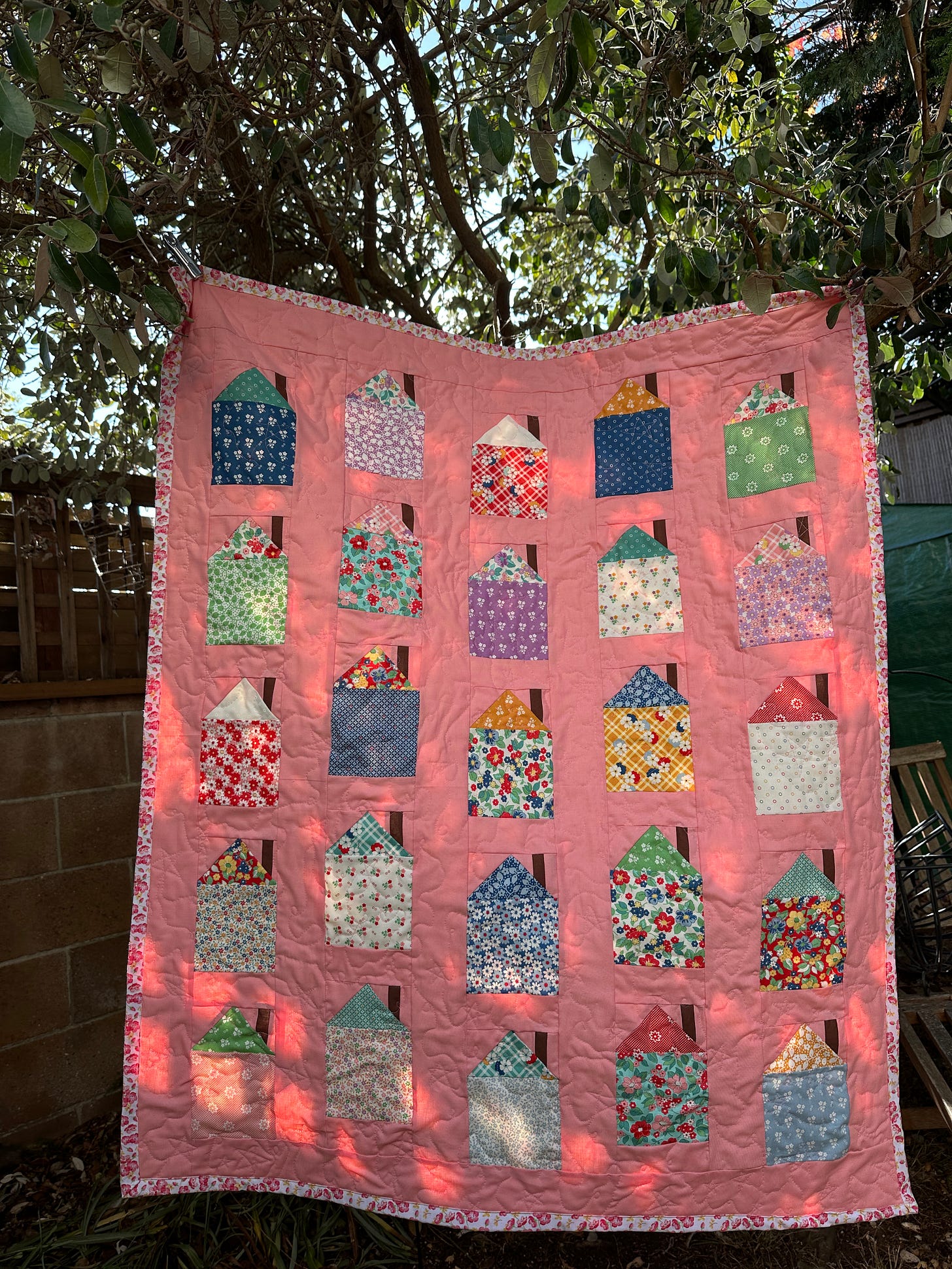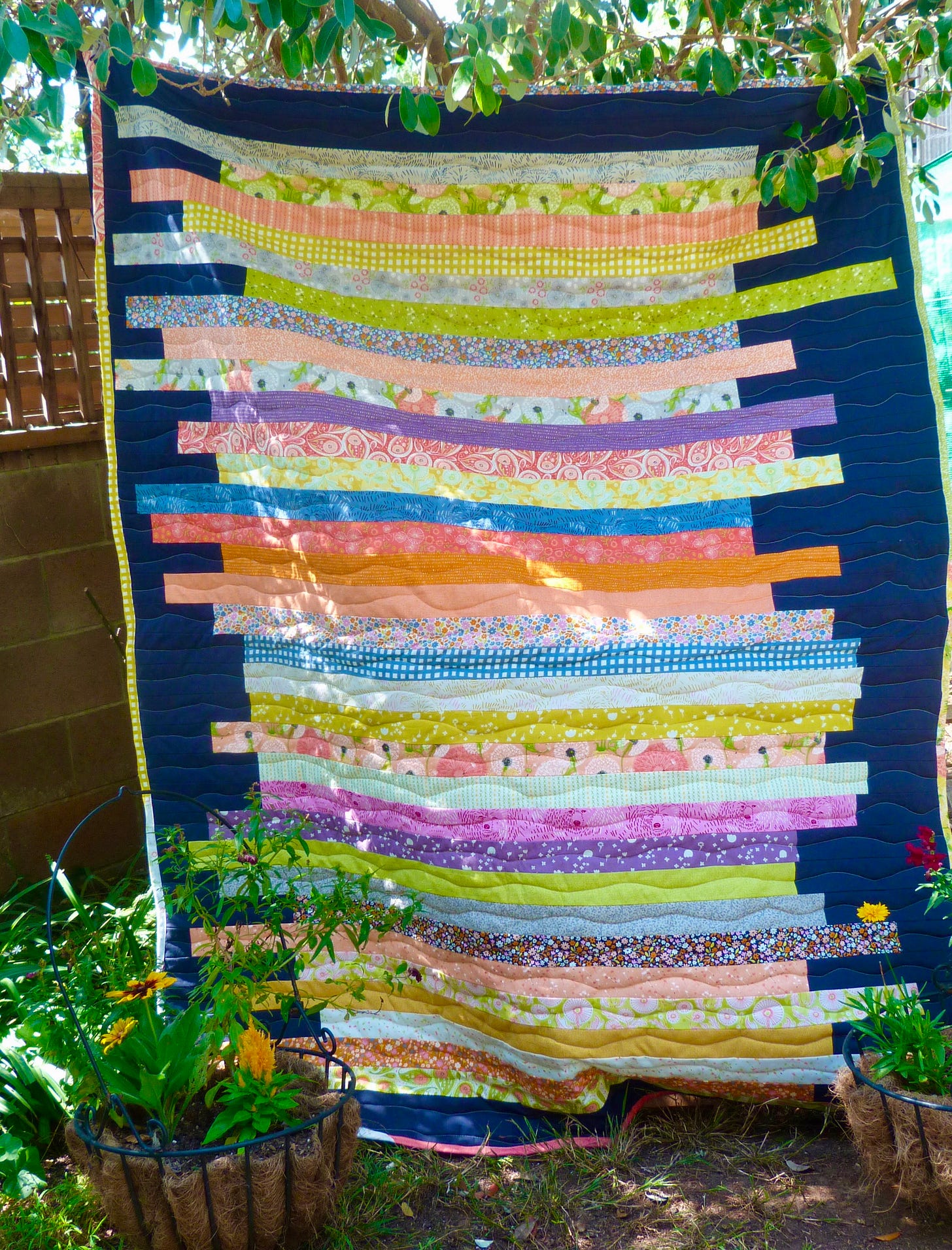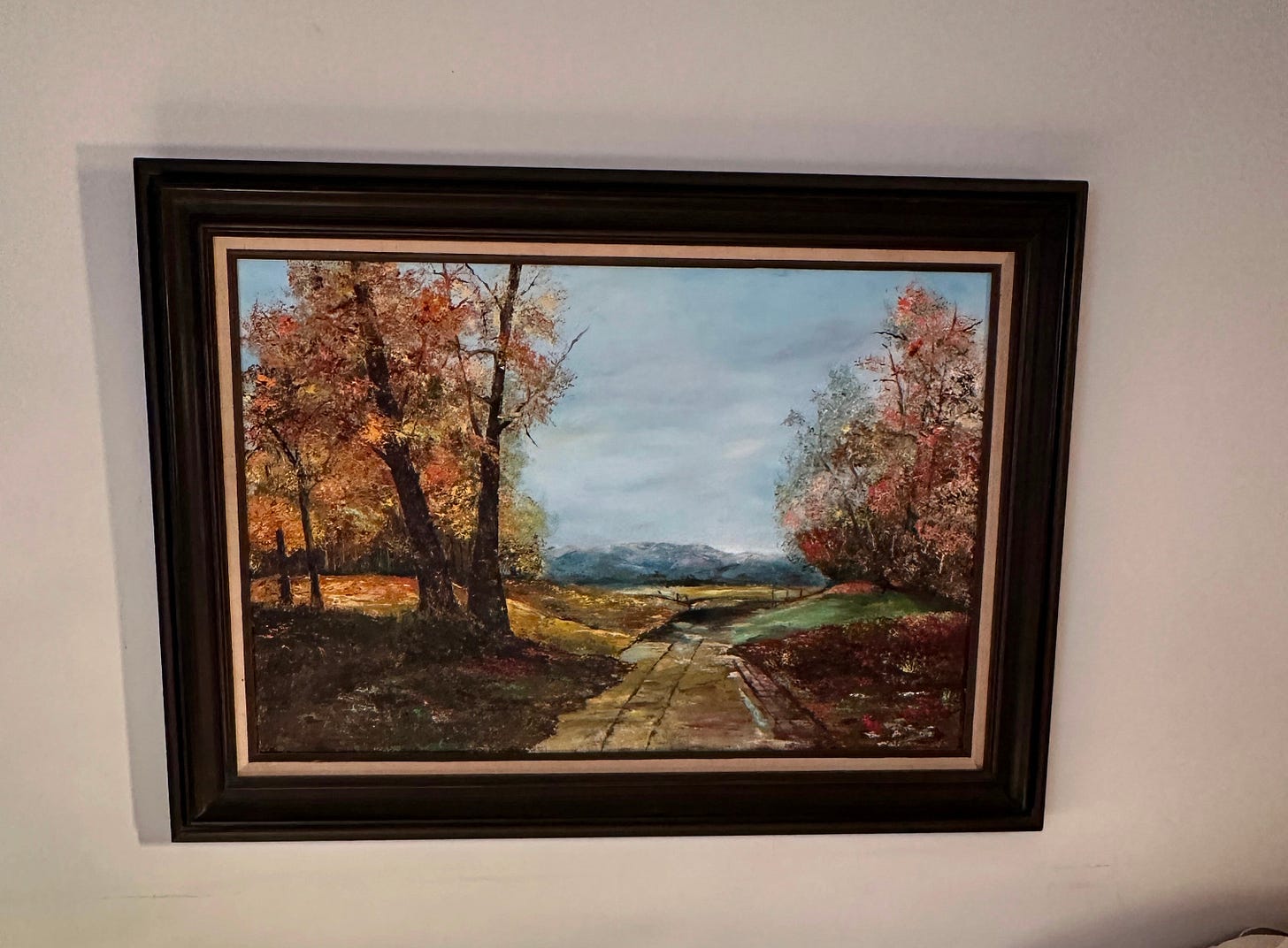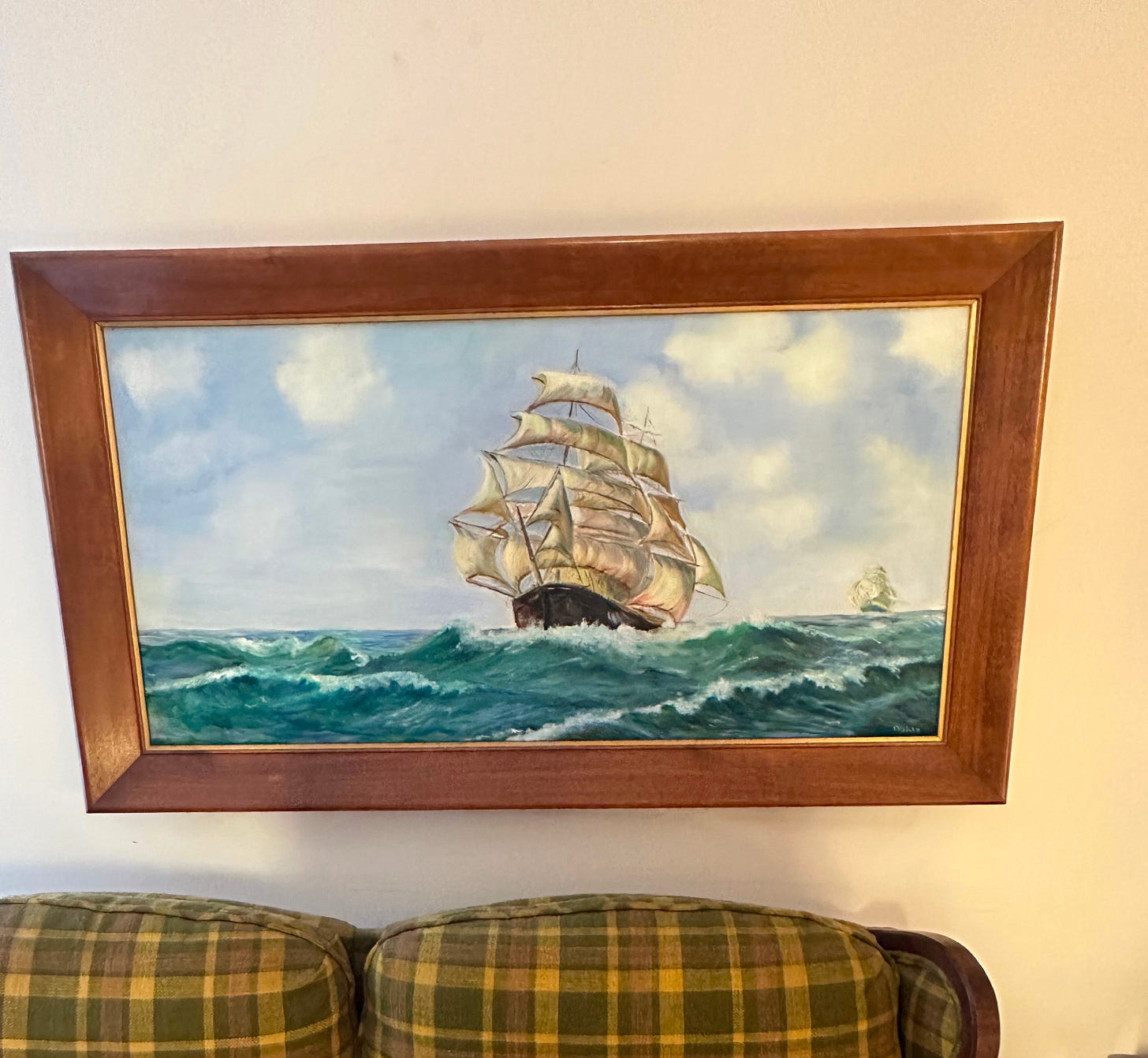Welcome to this week’s edition of Reading Art
The heaviness of the past few weeks is a feeling that is very difficult for me to articulate, but I know we all feel it. This week’s post will be a bit unconventional: read on for some discussion of the vibrancy of objects, an apt critical framework for the moment, and then a mini virtual gallery tour of some art I’ve spent quite a bit of time with in January. We’ll be back to regularly scheduled programming next week, but for now I wanted to take some time to reflect.
I’ve been displaced from a home in Los Angeles to which I never shall return—but a home which, as Penelope says as she reflects on the possibility of being forced to leave Odysseus’ house, “I will always remember even in my dreams” (Od. 19.560 ff.).
It’s like I’ve been given an opportunity many humanists might find intriguing: to experience critical theory firsthand, through experience and not only hypotheticals. As I count up all the things that are now lost to me, it seems as though the theories behind New Materialism (which seeks to articulate the agency and vibrancy of material objects, not just human subjects) have finally come to life for me.
As political theorist Jane Bennet (2010: 13) remarks in her landmark work Vibrant Matter, “if matter is lively, then the difference between subject and object is minimized and the shared materiality of all things is elevated.” In a similar vein, scholars Diana Coole and Samantha Frost elaborate on the phenomenon (2010: 9):
According to the new materialisms, if everything is material inasmuch as it is composed of physiochemical processes, nothing is reducible to such processes, at least as conventionally understood. For materiality is always something more than “mere” matter: an excess, force, vitality, relationality, or difference that renders matter active, self-creative, productive, unpredictable.
The things I used to have are gone, obviously, but they nevertheless seem to have some life of their own even now: my favorite coat that I pulled out every winter, the special dinner plate that said “Happy Birthday” on it, used only two or three times a year and a marker of passing time, the unworn pajama set I was saving for a cozy evening at some indefinite point in the future. All these things exist somewhere in the kaleidoscope of memory, and gave some structure to the days, weeks, and months of the past. They still contain, in other words, some vital force: it’s just that I just can’t reach them in a physical sense anymore. But memory picks up the slack when materiality fails.
I was also thinking about the way in which many of the works of my own hands are no more, but pictures of them still remain. In particular, this was the year I got into quilting as a creative outlet in the throes of writing my dissertation. I made placemats, table runners, small quilts, bed-size ones. Two that I gave away as gifts still survive, but the rest are lost. They’ve become my own personal oeuvre of performance art: created and then destroyed. There’s pictures of some of them, but not all, creating a fascinating tension between memory and reality: they still feel real, because I remember them and remember making them. Undoubtedly, the ones that I don’t have pictures of will fade with time.
I can still imagine this one lying on the bed, its imagery apt for a shifting sense of home:
And another:
With regard to the rest of my belongings, there are generally no photographs of the things I have created, or owned, or touched. I simply remember them. If I had the inclination to do so, I could write something down about them, and then there would still exist that verbal description of a visual work, what the Greeks would refer to as an ekphasis, but there would still be no object.
These and other things were not “me,” of course, as I exist and continue to exist without them. But they also were the embodiment of the rhythms of my life, from the shoes I used to kick on to go get the mail to the scrapbooks my mom made for me to mark important milestones. A fascinating conundrum for an intellectual and cultural historian such as myself! As I mentioned above, theories of “the fragment” and “vibrant materialism” have come to life for me in a way that is much more shocking in practice than I ever could have anticipated in any seminar discussion.
Indeed, in the course of my graduate work, I’ve thought quite a bit about this, but not experienced it. There are millions of fragments of antiquity, from works of literature that are either not extant or exist only in little bits and pieces, quotations copied down almost by chance, to pieces of pottery and sculpture, and even to paintings stolen long ago or disappeared into the void of the “private collection,” sometimes as inaccessible as if they had actually been destroyed.
In many other cases, we know about various things of the past because people took the time and effort to describe them in texts, an activity I now know firsthand is much more laborious in practice than it may seem in theory. For example, Ancient Greek historian Herodotus loved to describe various objects he had seen in a temple or while visiting other landmarks, such as a statue of a man riding on a dolphin to commemorate renowned musician Arion. Unfortunately, or maybe fortunately, there is no way to catalogue every single thing that used to be one of many props in the setting of my former life.
I could take the time to write about all the things I no longer have, but would like to remember, but I know I won’t. There will just be fragments of them, maybe snippets of them in photographs or brief mentions of them in conversations.
The fragment has also been the focus of much scholarly discussion in the past few years. Glen Most, in a 2009 article on the idea of the fragment, speaks of a “lost whole” that fascinates the spectator of those pieces, however few, that remain. But as Most remarks, “total continuity is usually, perhaps always, an illusion” (2009: 9). The lost whole of my own life enthralls me now. I have my favorite tattered tee shirt still with me, but my beloved teal sweater t is gone; I brought a box of contact lenses, which I need to see, but the one-of-a-kind drawing of a quail family that I looked at a hundred times a day has returned to the dust. I don’t really need it, but it can’t be replaced, either. The total continuity of the fragments of the past are, as Most suggests, illusory.
I still like to think about this lost whole, and yet I know as Most does that the objects themselves only go so far. We are still here and we are therefore so lucky. The vital force of material objects does not match the vital force of living beings. I find myself less convinced, less intrigued by new materialism (cf. Boysen 2023), now that I know that my perspective as the human subject of my life is really the only thing I was able to bring with me in a crisis, when it came right down to it.
Let’s turn to some art, which we need now more than ever.
I am very grateful to have a place to stay with family, and not just a place to stay but a house that happens to be full of art—and therefore memory. In fact, the art here has a deep personal significance to me: it is a curated collection of paintings by my great-aunt, Doris. What follows is just a small selection of her complete oeuvre.
Here is a painting of a clear autumn day, when the red and gold of the turning leaves stands out against the sky:
It looks to me as though the ground is wet, like it just rained. Where the road leads is unclear, but looking at this painting feels like a calm walk through the countryside.
Here’s the boat on a windy sea, the one that reminds me of Walt Whitman’s O Captain! My Captain! (the ship has weathered every rack, the prize we sought is won). Or maybe pleasanter things, like the promise of embarking on a new adventure.
Here is a portrait of my uncles, one of whom loved to wear a cowboy hat when he was a kid. You couldn’t really know that just by looking, and you don’t necessarily need to; the context is important, but not critical. Sometimes art’s full significance can be parsed only by a select few—but maybe there’s something you noticed too, like the color of the stream flowing by or the impressionistic birds in the shallows. All of these are valid.
My aunt particularly enjoyed painting still lives, like this one:
But it’s not really still, is it? The motion of the flowers is all I can see, and the way that some have already fallen on the table. The symbolism of it all! Or maybe, like me, you just want to look at the vibrant blooms in the middle of the vase and think of life.
And that is what we will do: we will keep turning our attention to life, over and over, until destruction itself is just the memory, and the routines and objects that somehow define us (and yet do not define us at all, in any way) are restored. Take care until next time.
MKA
Some resources to help victims of the Los Angeles wildfires:

